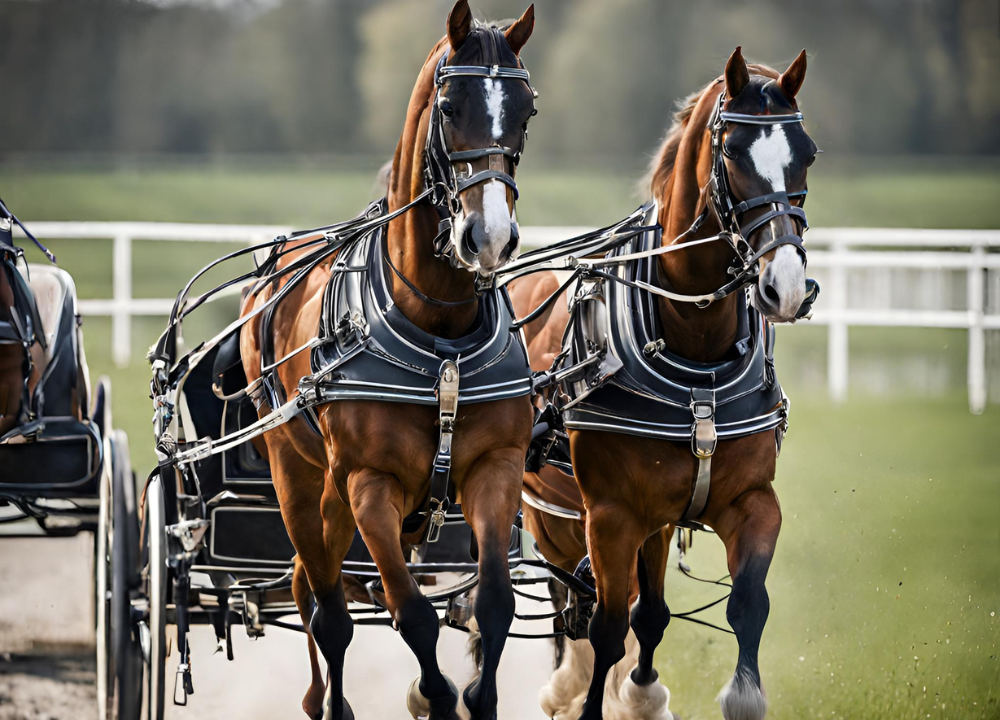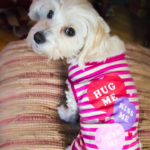No, Dutch Harness Horses are not gaited, they are known for their trotting ability. Dutch Harness Horses, also known as Dutch Tuigpaard, are renowned for their exceptional trotting ability, making them a popular choice for driving competitions and shows.
Despite their impressive trotting skills, these horses are not gaited. Gaited horses are breeds that possess additional gaits beyond the walk, trot, and canter. In contrast, Dutch Harness Horses are bred for their powerful and animated trot, displaying high knee action and suspension.
With a combination of elegance, athleticism, and a willing temperament, these versatile horses have gained recognition not only as performance horses but also as pleasure riding companions. Their extraordinary trotting ability makes them stand out in the equestrian world.
Understanding Gaited Horses
What Are Gaited Horses?
Gaited horses are a unique group of equines known for their ability to perform smooth, rhythmic gaits that differ from the typical walk, trot, and canter. While most horses naturally exhibit these three gaits, gaited horses possess additional gaits that are inherited genetically. These gaits, also known as intermediate or ambling gaits, provide a smoother ride for the rider due to their lack of a suspension phase. This makes them highly sought after for individuals who prefer a more comfortable riding experience.
Several horse breeds are known for their gaited abilities. Let’s take a look at a few popular ones:
| Breed | Gaits | Distinct Characteristics |
|---|---|---|
| Icelandic Horse | Tölt, Flying Pace | Small size, thick coat, five gaits |
| Tennessee Walking Horse | Flat Walk, Running Walk, Canter | Natural talent for smooth gaiting, friendly disposition |
| Racking Horse | Singlefoot, Rack, Canter | Distinctive head carriage, comfortable gaits for long hours |
These are just a few examples, but there are many other gaited horse breeds, each with their unique gaits and characteristics. It’s important to note that not all breeds have gaited individuals, and gaited horses can also be found within non-gaited breeds due to genetic variation.
So, are Dutch Harness Horses gaited? While Dutch Harness Horses are primarily known for their impressive trotting ability, they are not considered gaited horses. Their natural gaits consist of walk, trot, and canter, which are typical for non-gaited breeds. While they may not possess the additional intermediate gaits, Dutch Harness Horses still possess many other desirable qualities that make them exceptional sport horses and driving horses.
The Dutch Harness Horse Breed
Dutch Harness Horses are not typically gaited, but they are known for their elegant trot and powerful stride. This breed excels in driving competitions and showcases impressive athleticism and grace.
Overview Of Dutch Harness Horses
The Dutch Harness Horse (DHH) is a remarkable breed known for its exceptional carriage driving abilities and striking appearance. These horses possess an elegant yet powerful build, with strong hindquarters and an expressive head. With their high-stepping action and natural athleticism, DHHs are often the center of attention in carriage and dressage competitions.

Historical Background
The history of the Dutch Harness Horse dates back to the late 19th century when Dutch breeders began crossing native carriage horses with lighter European bloodlines. This deliberate breeding program aimed to create a versatile and stylish horse that could excel in harness work. The result was a breed that not only possessed the strength and endurance required for pulling carriages but also exhibited the coveted gaited characteristics.
Over the years, selective breeding has refined the Dutch Harness Horse’s qualities, including their trademark high-stepping gait, known as the “Dutch action.” This unique gait, characterized by a distinct knee and hock action, sets the DHH apart from other carriage horse breeds.
Throughout their history, Dutch Harness Horses have been valued not only for their impressive carriage skills but also for their brilliant temperament and willingness to work. Their gentle and cooperative nature makes them an excellent choice for both competitive driving and recreational driving enthusiasts alike.
Today, the Dutch Harness Horse continues to be recognized worldwide for its exceptional abilities in various equestrian disciplines such as driving, dressage, and even show jumping. The breed’s inherent elegance and natural talent have made it a popular choice amongst equestrians who appreciate both the beauty and functionality of these remarkable horses.
Dutch Harness Horses: Gaited Or Not?
Dutch Harness Horses are known for their elegance and versatility, making them a popular choice among equestrian enthusiasts. One common question that arises when it comes to these magnificent creatures is whether or not they are gaited. In this article, we will explore the topic of Dutch Harness Horses and their natural gaits, helping you gain a better understanding of their unique abilities.
Defining Gait In Horses
Gait refers to the various ways a horse can move its legs while walking, trotting, cantering, or galloping. Horses with multiple gaits can provide their riders with a smooth, comfortable ride, making them highly sought after for specific purposes such as long distance riding or carriage driving. When it comes to Dutch Harness Horses, understanding their natural gaits is essential in determining their suitability for different equestrian disciplines.
Natural Gaits Of Dutch Harness Horses
Dutch Harness Horses have three main natural gaits: the walk, trot, and canter. These gaits are the foundation upon which the horse’s training and further development are built.
- Walk: The walk is a four-beat gait where each foot hits the ground independently. It is a relaxed and steady gait, providing a comfortable ride.
- Trot: The trot is a two-beat diagonal gait where the horse’s front and back legs move together in pairs. It is a faster gait than the walk, providing a bouncy ride.
- Canter: The canter is a three-beat gait where the horse’s legs move in a specific sequence – the leading front leg, followed by the diagonal pair, and finally the trailing hind leg. It is a smooth and flowing gait, often used for dressage and showjumping.
While Dutch Harness Horses primarily excel in harness driving events, they can also be trained for riding disciplines. Despite not being naturally gaited, these horses have a strong work ethic and the ability to perform impressive feats with the right training and conditioning. Understanding their natural gaits is crucial for ensuring their proper development and overall well-being.

Factors Influencing Gaitedness
Dutch Harness Horses can exhibit gaitedness due to a combination of genetic factors and training techniques. The presence of specific genes and the horse’s conformation can contribute to their ability to perform additional gaits beyond the usual walk, trot, and canter.
Understanding these factors can help breeders and trainers maximize the horse’s gaited abilities.
Factors Influencing Gaitedness Gaitedness, or the ability to perform specific gaits such as the running walk or the rack, can vary among Dutch Harness Horses. Understanding the factors that influence gaitedness is essential for breeders, trainers, and potential owners who are interested in these versatile horses. Two main factors that play a significant role in determining the gaitedness of Dutch Harness Horses are genetics and breeding, as well as training and gait development.
Genetics And Breeding
The genetics of a Dutch Harness Horse can greatly influence its gaitedness. Certain bloodlines or individuals within the breed may have a predisposition for natural gaitedness, making them more likely to perform smooth and balanced gaits. Breeding programs that focus on preserving and enhancing gaitedness can result in horses with a higher likelihood of inheriting these desirable traits.
In Dutch Harness Horse breeding, it is common to select stallions and mares with proven gaitedness and strong bloodlines for breeding purposes. This careful selection process helps ensure that the desired gaited characteristics are passed on to future generations. Breeders may also consider the gaitedness of the horse’s ancestors, as this can provide important insight into the horse’s potential for gaitedness.
Training And Gait Development
While genetics play a significant role in a Dutch Harness Horse’s gaitedness, training and gait development further contribute to enhancing their natural gaits. Trainers collaborate closely with these horses, emphasizing the establishment of a solid foundation that encompasses balance, collection, and suppleness.
Throughout the training process, horses are exposed to a variety of exercises and techniques aimed at fostering gaitedness. These include lateral work, transitions between gaits, and exercises that specifically target engagement of the hindquarters. Consistent and appropriate training methods, coupled with patience and skilled horsemanship, prove instrumental in improving the gait quality and consistency of Dutch Harness Horses.
You may also want to read this article How Long before a Horse is Considered?
It’s important to recognize that not all Dutch Harness Horses are inherently born with gaited abilities, and the level of gaitedness can vary among individuals within the breed. Each horse is unique, and their response to training is individualized. While genetics lay the foundation, tailored training and conditioning based on the horse’s abilities are essential for unlocking their full gaitedness potential.
In conclusion, gaitedness in Dutch Harness Horses is a result of the interplay between genetics, breeding, training, and gait development. Breeding programs that prioritize gaitedness contribute to horses with innate abilities, while systematic training and conditioning serve to enhance and refine these natural gaits. Understanding these multifaceted factors empowers breeders, trainers, and enthusiasts to make informed decisions and collectively contribute to the development of gaited Dutch Harness Horses.
Frequently Asked Questions On Are Dutch Harness Horses Gaited
Are Dutch Harness Horses Naturally Gaited?
No, Dutch Harness Horses are not naturally gaited. They are known for their ability to perform smooth, high-stepping gaits such as the trot and the canter. These horses possess a natural talent for carriage driving and are highly sought after for their elegant movement.
Can Dutch Harness Horses Be Trained To Gait?
Yes, Dutch Harness Horses can be trained to gait. While they are not naturally gaited, with appropriate training and guidance, they can learn to perform additional gaits such as the rack or the singlefoot. However, it is important to note that not all individual horses may excel at gaiting, as it depends on their conformation and natural ability.
How Is The Gaiting Ability Of Dutch Harness Horses Measured?
The gaiting ability of Dutch Harness Horses is often evaluated through various methods, including performance tests and competitions. These assessments typically involve judging the horse’s movement and carriage during specific gaits such as the trot and canter. The horse’s natural talent for gaiting is a key factor in determining its suitability for carriage driving and other disciplines.
What Is The Importance Of Gaiting In Dutch Harness Horses?
Gaiting is an important characteristic of Dutch Harness Horses as it enhances their performance and versatility. The smooth and precise gaits of these horses make them well-suited for carriage driving, dressage, and other competitive disciplines. Gaiting not only adds elegance and fluidity to their movement but also showcases their trainability and athleticism.
Conclusion
Dutch Harness Horses are not typically considered gaited. While they are known for their elegant and powerful gaits, they do not possess the natural ability to perform specific gaited gaits such as the running walk or the rack. However, this does not diminish their overall ability to excel in driving and other disciplines, making them a versatile and sought-after breed in the equestrian world.







